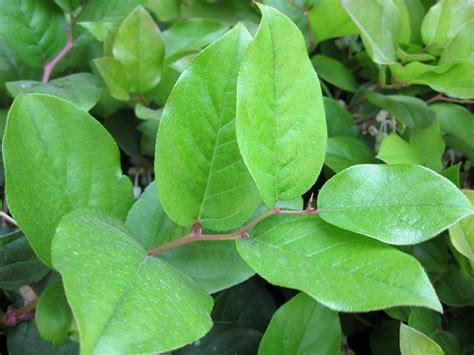Salal
Hul'qumi'num: T’eqe’
SENĆOŦEN: DAKE IȽĆ
Latin: Gaultheria shallon
Description: Salal has shiny, leathery, evergreen oval leaves that come to a point. The small pinkish-white flowers come out around May to June. In the late summer and early fall, these flowers become hairy, dark purple-blue berries. The salal bushes can grow up to 5 m high and cover a large area. They are usually found at the edges of forests.
”The florist's friend. The handsome evergreen leaves of this mid sized shrub, which grows so well in our area are often harvested to fill in flower bouquets. In early summer little nodding bell shaped flowers appear to be followed later in the season with blue purple berries that contain lots of Vitamin C in addition to all those nutrients found in expensive tropical berries. They are great in pancakes and muffins and make excellent jam. They are a bit of a bother to pick because you will want to collect the whole drupe in the forest and pick off each berry when you get home. This is best done as a picking party on a lazy afternoon, leaving time to cook up a nice batch for juice, jam, or maybe even wine.”
— Dora
Photo credits: East Multnomah Soil and Water Conservation District
Harvest and Sustainability: Salal berries start to ripen from the end of July through September. Since the berries are quite soft, it’s important to pick them gently to avoid crushing. The flavour of the berries can vary based on the location, the specific bushes, and even individual berries. It's a good idea to try different locations at various times to find the flavour you prefer. Generally, the juiciest and tastiest berries are the larger ones found in sunny, wet areas.
Many animals, such as bears, birds, and squirrels, also rely on salal berries as a food source. To ensure that these creatures have enough to eat, it's important to spread out your harvest and leave berries behind.
Uses: “T’eqe’ is an abundant plant throughout the area and is one of the most dominant plants on the west coast of Vancouver Island. The berries of t’eqe’ are not the sweetest of berries, but they are common throughout the coast. If you are lost in a remote area and in need of food, t’eqe’ is one of the most common late-summer berries. The berries can be easily dried and preserved.”
— Except from Hul’qumi’num Language Guide
These berries are not only flavourful but also packed with antioxidants, vitamins, and dietary fiber, making them a valuable addition to the diet. Traditionally, they were consumed fresh, dried, or used in various culinary preparations like jams and pies. Beyond their culinary appeal, Salal berries are also recognised for health benefits due to their high antioxidant content, which helps to combat oxidative stress and support overall well-being. New leaves can also be eaten; they can help suppress appetite and contain high content of vitamin C.








